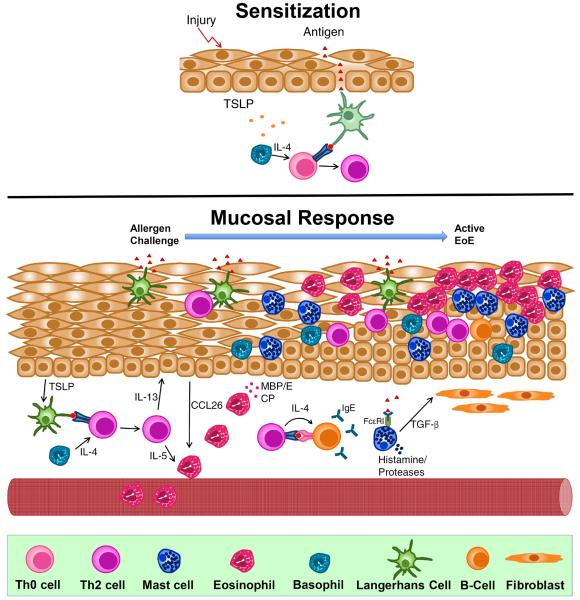Fig 1.
Proposed allergic mechanisms involved in the pathogenesis of Eosinophilic Esophagitis (EoE). TOP: Proposed mechanism of allergic sensitization in EoE. In the presence of epithelial injury, TSLP production is elicited from epithelium. This primes basophils to produce IL-4 which promotes allergic sensitization after antigen presentation to a naïve T-cell which generates antigen-specific Th2 cells. BOTTOM: Proposed mucosal response in EoE. Subsequet antigen challenge leads to recruitment and expansion of Th2 cells which secrete IL-5 and IL-13, both critical in the recruitment of eosinophils and remodeling of the esophagus. Th2 cells locally promote class-switching of B-cells to produce antigen-specific IgE, which binds to the surface of mast cells. Activation of mast cells leads to the releast of pro-inflammatory mediators such as TGF-β, which promotes remodeling and enhances muscle cell contractility.

